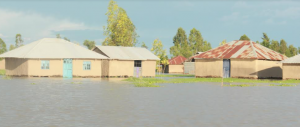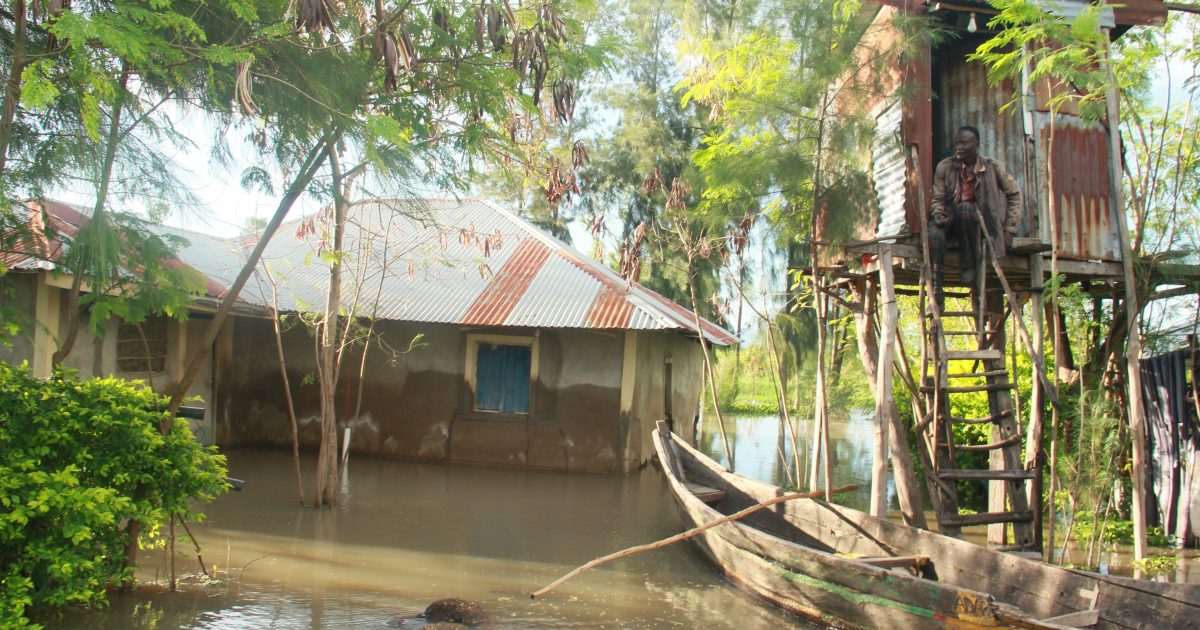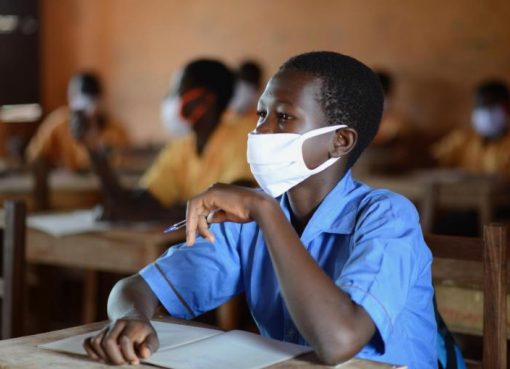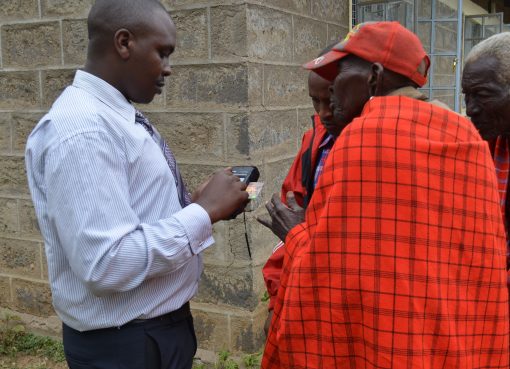When floods surged and chaos reigned once more, villagers in Kawino South location, Kadibo Sub-County sprang into action gathering what they could salvage, and fled their ancestral lands seeking refuge from the tragedy in evacuation camps.
But amidst the frantic exodus, Joseph Nyikal stood adamant. Despite his family’s plea to abandon their waterlogged home, he remained resolute. Defiantly, he clung to his ramshackle house perched atop a tree submerged by the rising waters.
Nyikal vividly recalls the relentless onslaught of floods that have always engulfed his village countless times over the years. These sad memories were rekindled by the current calamity that caused the death of one person and displaced over 40,000 households in Kisumu County since March.
Floods are becoming more frequent and intense with the Kano plains in Nyando and Kadibo Sub Counties in Kisumu County, being worst affected, damaging livelihoods, and posing a great threat to food security, and infrastructure.

Every year, heavy rainfall makes the water levels of Lake Victoria rise causing a backflow affecting residents in Kadhiambo village, a sprawling lowland area on the shoreline of the lake where Nyikal and his community call home.
To withstand the devastating impacts of climate crises, Nyikal, 69, resolved to build his house on top of a tree as a traditional way of coping with regular floods. The method proved resilient even in the face of the widespread flooding that has hit the village.
Flooding is an annual event in the low-lying regions, as rainfall in the area and the highlands raises the water level in the lowlands. In dry seasons, the water recedes. To adapt to this extreme fluctuation, Nyikal invented the idea of building his house made of wood and iron sheets on top of a tree to mitigate frequent flooding.
Subsequently, he says, “During the 2023 floods, I suffered massive losses after the few belongings including my livestock, sacks of cereals and a set of furniture I had salvaged from the floods and kept at a friend’s place were stolen and no one was willing to provide an explanation.”
Following the setback, Nyikal said, “I was not going to transfer the remaining few items anywhere, instead, I opted to build a house on top of the tree and keep them safe within my flooded compound that I now call home.”
The father of four says the raised structure has been his aboard for the past one year after his previous home was destroyed and submerged in water nearing its roof. The situation has been worsened by the recent floods and back flow from the lake that has further exposed him to risks of adverse weather and dangerous hippos.
“Being a fundi, I constructed the house on my own at a cost of about Sh8,000 by using locally available building materials like nails, hardwood, mabati, which I used to cheaply put up the structure that is supported by two adjacent trees in my marooned compound,” Nyikal says.
The house perched squarely atop the tree boasts a wooden foundation, corrugated iron sheet walls, and roofing, gently swaying in harmony with the rustling of the Cassod tree branches stirred by the mid-morning breeze from the lake.
He has handcrafted a wooden ladder which he uses to access his abode after disembarking from the boat. He has gone a step further to connect it to the electricity grid, ensuring it is powered day and night.
“My wife and four children couldn’t bear to stay with me on top of the tree. I was forced to relocate them to Nyang’ande center, where I used to pay a monthly rent of Sh2,500. Sadly, our misfortune compounded when the recent flooding engulfed the center as well, leaving us stranded once again,” he narrated.
When I ventured into the plan, my family and community members resisted the idea fearing that, “I would fall off the tree and get injured or drown but the house is standing still to date.”
Vast swathes of the expansive wetlands in the Lake Victoria Basin spanning Kadhiambo, Nduru, and Ugwe villages in Kawino South location that were once teeming with life and sustained agriculture, now lie completely submerged and assimilated into the depths of the lake.
“My entire seven-hectare parcel of land has been completely engulfed by the rising waters, leaving me with no ground to lay my head or cultivate. Our once-thriving village is now a lake being traversed only by using boats,” Nyikal lamented.
The devastating impacts of climate change, he adds, “have rendered us in despair. I don’t have any source of income and I’m unable to provide for the basic needs for my family. We are adrift in a sea of uncertainty, our hopes dashed by forces beyond our control.”
Despite his dire circumstances, the old man’s concerns only deepen with the presence of hungry hippos that now roam the landscape in search of food. Though his elevated house remains beyond their reach, the looming threat to his safety perpetually clouds his thoughts.
Nyikal reveals he contemplated deserting his home, “I don’t have any neighbors to talk to apart from the hippos, stray dogs, and cats as companions,” he laments, their silent presence a stark reminder of abandonment by those who fled the scene in haste.
“Unfortunately,” he adds, “I’m trapped, with nowhere to seek refuge, and no choice but to endure this solitary existence.”
Michael Buodoh, Chief, Kawino South Location expressed dissatisfaction regarding Nyikal’s decision to erect a house precariously atop a tree submerged in floodwaters.
“When we visited his residence, we emphasized that humans cannot live like birds perched atop trees,” Buodoh remarked, further stating, “Nyikal’s decision to dwell in isolation and under precarious circumstances can only be likened to that of an animal.”
The Chief urged the community members, “to evacuate their residential places in good time and move to raised grounds to avoid disaster during cases of potential floods.”
Kenya Red Cross Society, Nyanza Regional Coordinator, Maurice Anyango confirmed that the over 40,000 individuals grappling with floods in the lakeside county have sought refuge at 16 makeshift camps scattered across the region.
Anyango emphasized that the majority of flood victims are rice farmers who have endured significant losses, with their livelihoods washed away by the overflow from River Nyando and the intensified backflow from Lake Victoria.
“The damage is devastating, with water levels ranging from three to five meters in the affected areas. In some places, the water is knee-deep, while in lakeshore areas like Kadhiambo village, it rises above the waist,” Anyango narrated.
He underscored the urgent need for rehabilitation once the floodwaters recede, emphasizing that community members require support to recover from the trauma and substantial losses incurred, to enable them rebuild their lives.
According to Kisumu County Director of Environment and Climate Change, Martin Oloo, flooding has led to siltation of the lake – an occurrence where the running water transports sand and other debris downstream, depositing it on the lake’s bed. This accumulation of sediment has resulted in the elevation of the lake’s depth, consequently causing backflow in certain areas.
“Lake Victoria has been filled to capacity yet there is a persistent influx of water from feeder rivers. As a result, the surplus water is being discharged into adjacent low-lying villages causing floods,” explains Oloo.
He warned residents about the risks of constructing homes along the shores. Instead, he advised them to opt for temporary and mobile housing solutions. These structures could be easily moved and relocated to elevated areas during flood events, offering greater resilience to the changing landscape and mitigating potential losses.
“It is devastating, I have seen expensive and modern homes where owners invested millions of shillings into construction, only to see them swallowed and ruined by the merciless floodwaters,” lamented Oloo.
The Group Managing Director, Tenants Become Landlords – Go Green Limited, Paul Udoto avers that implementing costly measures such as constructing dykes along the rivers and desilting the lake are necessary actions to protect communities from the recurring devastation of floods.
Alternatively, Udoto suggests that community members must take responsibility for their housing construction practices by adopting raised structural foundations to mitigate and effectively manage future risks.
By Robert Ojwang’




